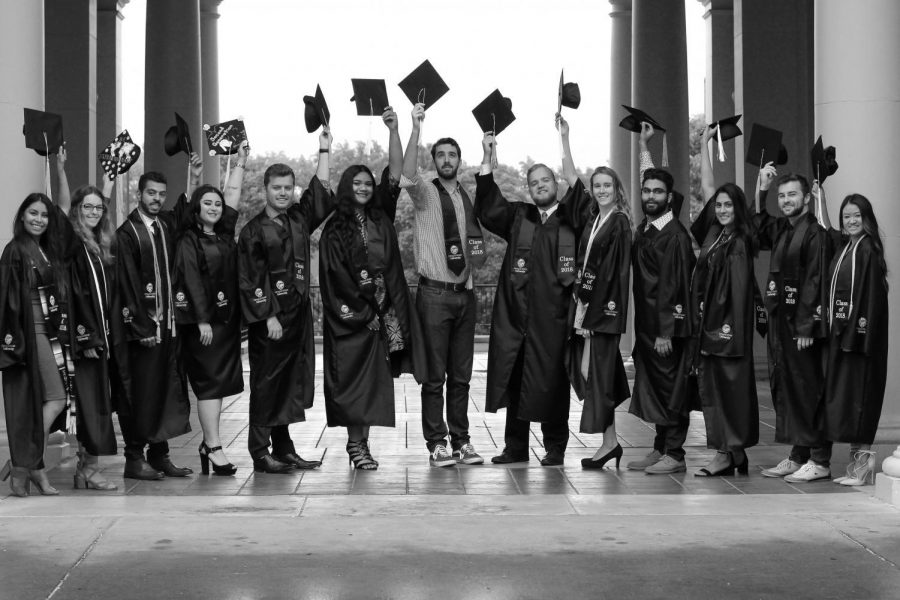‘Diversity is a critical ingredient’ for student success, OSU mission
June 11, 2018
The level of diversity at Oregon State University has increased over the past 30 years and this is trend that OSU hopes to continue, according to OSU Vice President and Chief Diversity Officer Charlene Alexander.
“The purpose of higher education in the United States is to equip future generations of citizens to function effectively in a democratic society, a society that is constantly changing as we become increasingly global in our focus,” Alexander said via email.
American universities across the nation agree on the importance of diversity on their campus, according to Alexander.
“We strive for diversity given the fact that the rapidly changing demographics of the United States necessitates that higher education be that place where diverse students, faculty and staff learn how to constructively engage in difficult dialogues that strengthen our understanding of each other, across a myriad of identities,” Alexander said via email.
According to OSU’s institutional research over the past 30 years, the number of bachelor’s degrees awarded to minority students has increased. In the 1997-1998 academic year, 0.8 percent of non-international students in the graduating class were African-American, 6.4 percent were Asian, 2.4 percent were Hispanic, 0.3 percent were Native Hawaiian or Pacific Islander, 0.2 percent were mixed-race (defined as two or more races) and 76.8 percent were White. Of these students, 46.6
percent were women.
Compare these figures to the 2017-2018 year, where 1.1 percent of non-international students graduating with bachelor’s degrees are African-American, 7.7 percent are Asian, 8.0 percent are Hispanic, 0.3 percent are Native Hawaiian or Pacific Islander, 5.9 percent are mixed-race and 65.6 percent are White. Of these students, 47.7 percent are women, a small increase from 1997.
The only ethnic group to have experienced a decrease in presence in the graduating class are American Indians and Alaska natives. In 1997, they composed 1.3 percent of the graduating class, whereas today they represent only 0.6 percent.
When asked about the declining numbers of bachelor’s degrees being awarded to these students, Cade Sixkiller Schneider, a Native American student at OSU, was discouraged.
“That statistic is extremely disheartening. I think it’s a matter of encouraging Native American students to pursue higher education. When you’re underrepresented, it can be a hard thing to imagine. We need to provide enough support to native students so that they can really see themselves in the classroom and engaged in the curriculum,” Schneider said via email.
This disparity is not being ignored by the administration, however. The Director of Admissions at OSU, Noah Buckley, said that there is still work to be done in regards to diversity balance.
“Faculty and staff, along with many current students have been working to identify gaps and opportunities related to recruiting and ensuring student success for students of color. This has resulted in several programs in key communities throughout Oregon to recruit diverse students to OSU. We still have a long way to go, particularly in our Black and Native American communities, but we have momentum and plan to stick with it for the long haul,” Buckley said via email.
Despite the overall expansion in diversity over the past 30 years, OSU continues to strive for further improvements within future classes.
“Diversity is a critical ingredient to student success at OSU and is a measure of our access mission. Diversity expands all students to perspectives, new ways of thinking, and knowledge. This challenges us to examine our own beliefs and perspectives and enhances self-awareness. Campus diversity also prepares students to work in a more diverse and global society beyond OSU,” Buckley said via email.


















































































![Newspaper clipping from February 25, 1970 in the Daily Barometer showing an article written by Bob Allen, past Barometer Editor. This article was written to spotlight both the student body’s lack of participation with student government at the time in conjunction with their class representatives response. [It’s important to note ASOSU was not structured identically to today’s standards, likely having a president on behalf of each class work together as one entity as opposed to one president representing all classes.]](https://dailybaro.orangemedianetwork.com/wp-content/uploads/2025/03/Screenshot-2025-03-12-1.00.42-PM-e1741811160853.png)
























